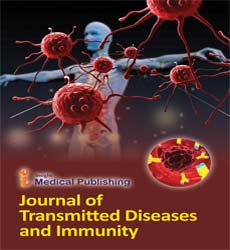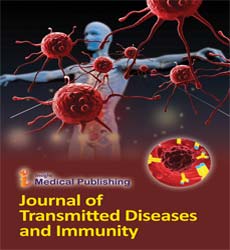ISSN : 2573-0320
Journal of Transmitted Diseases and Immunity
Executive Summary on Immunology
Trevor Cornelius Stuart*
Department of Psychology, University of Gothenburg, Gothenburg, Sweden
- *Corresponding Author:
- Trevor Cornelius Stuart
Department of Psychology, University of Gothenburg, Gothenburg, Sweden
E-mail: stuarttrevor@yahoo.com
Received Date: March 08, 2021; Accepted Date: March 18, 2021; Published Date: March 29, 2021
Citation: Stuart TC (2021) Executive Summary on Immunology. J Transm Dis Immun. Vol.5 No.2:30
Abstract
Immunology is a part of science that covers the investigation of invulnerable frameworks altogether life forms. Immunology graphs, gauges, and contextualizes the physiological working of the insusceptible framework in conditions of both wellbeing and infections.
The invulnerable framework comprises of variables that give natural and procured insusceptibility, and has developed to turn out to be more explicit, perplexing, proficient, and managed. One of the chief elements of the human safe framework is to guard against contaminating and other unfamiliar specialists by separating self from non-self [unfamiliar antigens] and to marshal other defensive reactions from leukocytes. The safe framework, if dysregulated, can respond to self-antigens to cause immune system sicknesses or neglect to safeguard against contaminations.
Insusceptibility from infection is really presented by two helpful protection frameworks, called vague, intrinsic invulnerability and explicit, gained resistance. Vague defensive components repulse all microorganisms similarly, while the particular resistant reactions are custom fitted to specific sorts of intruders. The two frameworks cooperate to upset creatures from entering and multiplying inside the body. These safe systems likewise help take out strange cells of the body that can form into disease.
The resistant framework has two sections:
Inborn [vague] insusceptible reaction
Gained [explicit] insusceptible reaction
The inborn insusceptible reaction is the vague, first reaction to unfamiliar dangers. Invulnerable cells perceive a likely danger, ring the caution, and the incendiary reaction starts.
The gained insusceptible reaction is a particular assault on unfamiliar dangers. Central participants in the gained resistant reaction incorporate T cells, B cells, and antibodies: Lymphocytes are resistant cells with various obligations.
For instance, assistant T cells communicate with B cells as a feature of the counter acting agent creation measure and enact cytotoxic T cells to focus on the distinguished microbe.
B cells are resistant cells that can flow all through the body, cooperate with antigen-introducing cells, enact assistant T cells, change into plasma B cells, and mass produce antibodies. Antibodies are proteins created by B cells planned explicitly to perceive an extraordinary unfamiliar substance, called an antigen.
Infections brought about by problems of the safe framework might be brought about by immunodeficiency, in what parts of the safe framework neglect to give a sufficient reaction, or autoimmunity, in which the invulnerable framework over reacts, making harm the body of its host. Other insusceptible issues incorporate extreme touchiness, in which the framework reacts improperly or too seriously to innocuous mixtures, as in asthma and hypersensitivities.
An invulnerable reaction might be because of a wide range of unexpected changes, and could be identified with themes being perceived or potentially changes to the safe framework [like the movement of themes or insusceptible cells starting with one tissue then onto the next, or the fast appearance of a microorganism or a tumor].

Open Access Journals
- Aquaculture & Veterinary Science
- Chemistry & Chemical Sciences
- Clinical Sciences
- Engineering
- General Science
- Genetics & Molecular Biology
- Health Care & Nursing
- Immunology & Microbiology
- Materials Science
- Mathematics & Physics
- Medical Sciences
- Neurology & Psychiatry
- Oncology & Cancer Science
- Pharmaceutical Sciences
